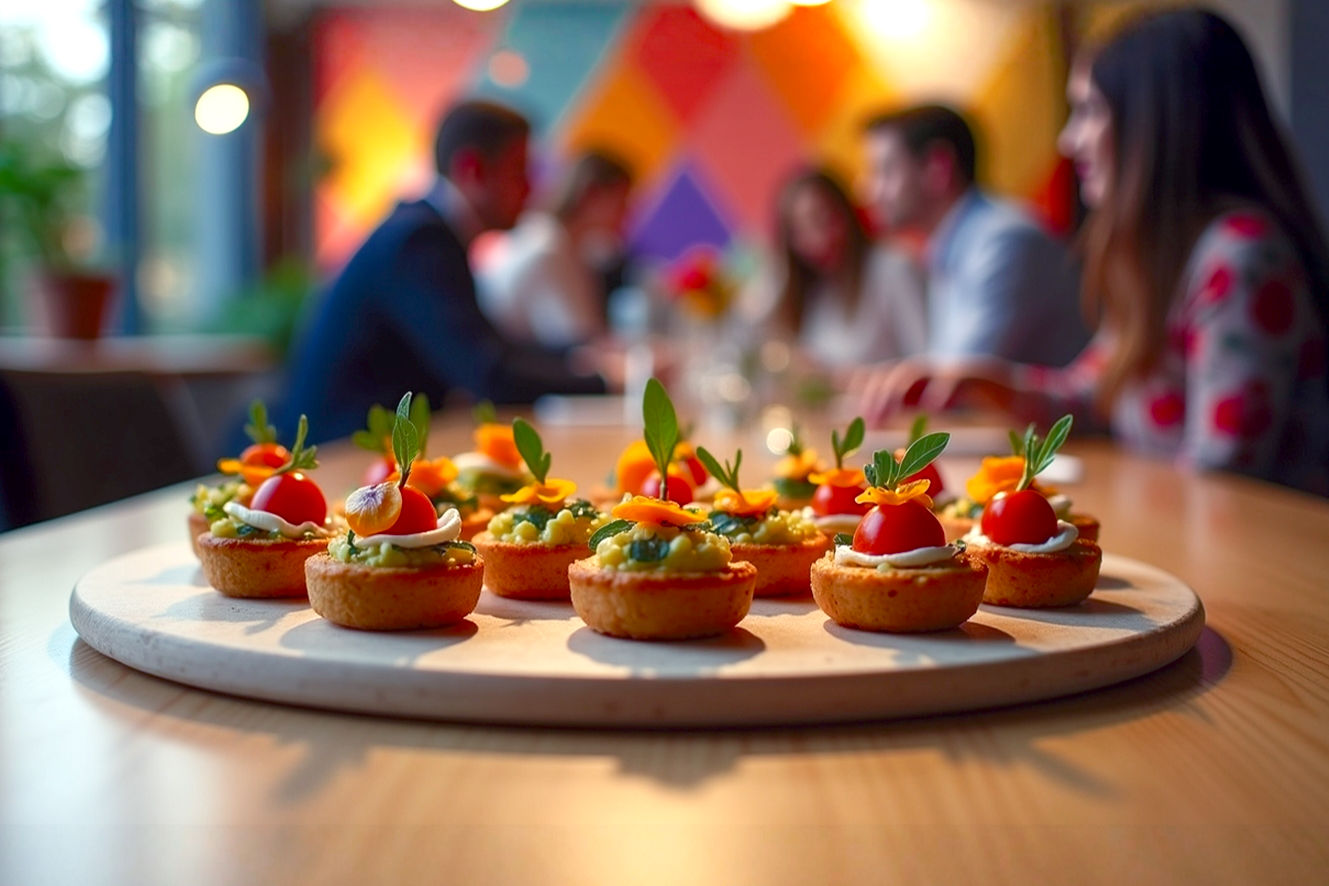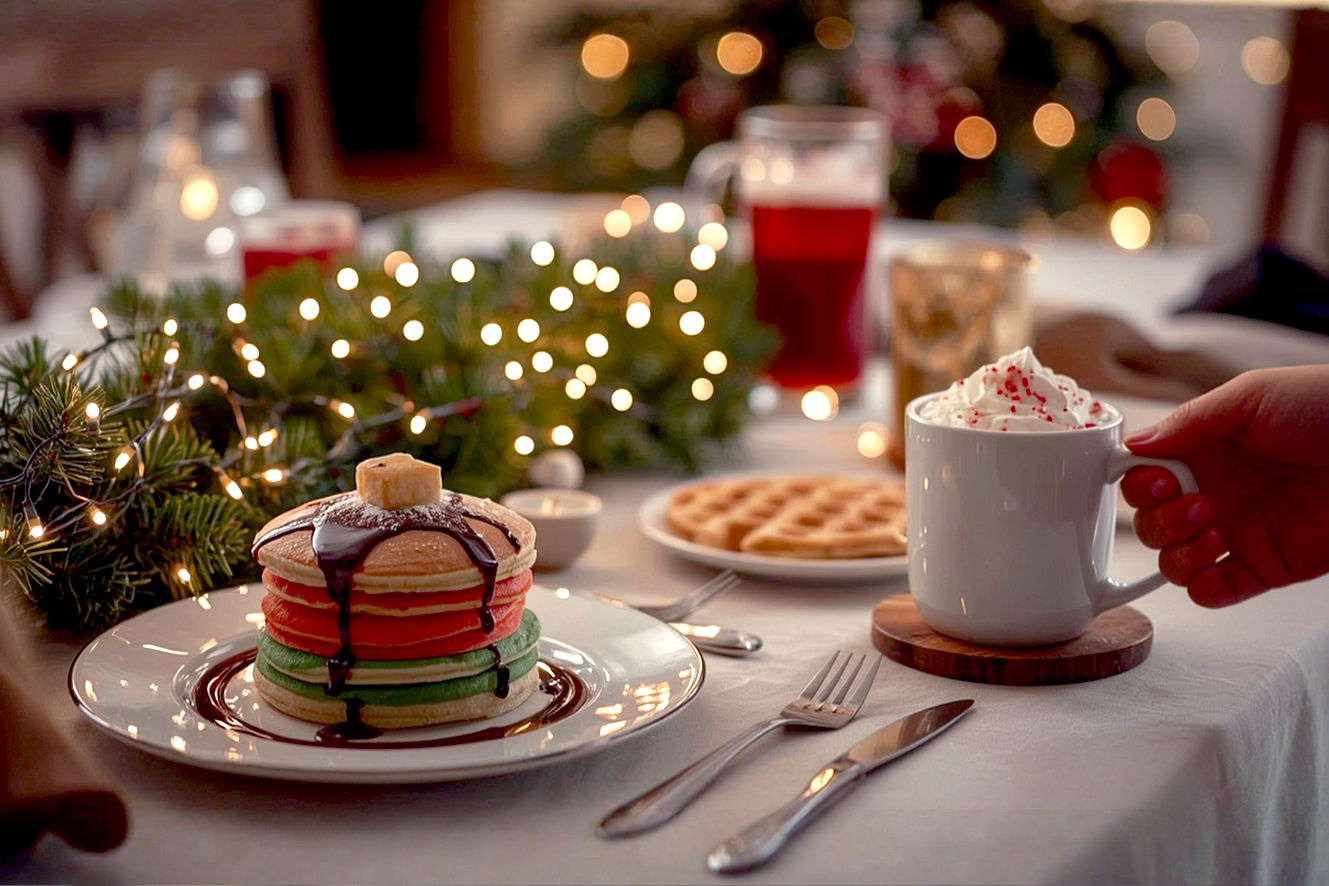This post may contain affiliate links. If you make a purchase through these links, we may earn a commission at no additional cost to you.
Christmas in Italy isn’t just a holiday; it’s a profound celebration of family, faith, and, perhaps most notably, food. Unlike many cultures where a single grand meal defines the festive period, Italian Christmas traditions revolve around two distinct and equally important culinary events: the Christmas Eve dinner, known as La Vigilia, and the elaborate Christmas Day lunch, Il Pranzo di Natale. These meals aren’t just about eating; they’re deeply rooted in centuries of tradition, regional diversity, and a shared love for gathering around the table with loved ones.
From the coastal regions where seafood reigns supreme on Christmas Eve to the northern mountains where rich, meaty dishes warm the soul on Christmas Day, the Italian Christmas table offers a fascinating journey through the country’s diverse culinary landscape. We’ll explore the specific dishes, the reasons behind their prominence, and the cherished customs that make an Italian Christmas truly unique. Get ready to discover why these festive meals are much more than just food; they’re a vibrant expression of Italian culture and family bonds.
The Heart of Italian Christmas: La Vigilia (Christmas Eve Dinner)
For many Italian families, especially those with strong ties to Southern Italy or Italian-American heritage, Christmas Eve dinner, or La Vigilia, is the most anticipated meal of the entire holiday season. This isn’t just any dinner; it’s a centuries-old tradition deeply intertwined with religious observance and cultural identity.
Tradition and Significance
The primary reason for La Vigilia’s unique menu is its historical connection to religious fasting. Traditionally, the Catholic Church mandated abstinence from meat on the eve of major feast days, including Christmas. This wasn’t about going hungry; rather, it was a symbolic act of purification and anticipation for the birth of Christ. Therefore, the meal became an elaborate celebration centered entirely around fish and vegetables. This practice reflects a deeper spiritual meaning, preparing both body and spirit for the joyous occasion of Christmas Day. It’s a time for families to come together, often after attending a late afternoon or early evening church service, to share a meal that is both light in its lack of meat and incredibly rich in flavor and variety. The atmosphere is typically one of joyful anticipation, with the focus shifting from the solemnity of preparation to the excitement of the upcoming holiday.
The Feast of the Seven Fishes (Festa dei Sette Pesci)
When discussing Italian Christmas Eve, it’s almost impossible to avoid mentioning the Feast of the Seven Fishes. This tradition, while widely celebrated by Italian-Americans, has a more nuanced presence in Italy itself. In the United States, it’s often a grand, multi-course seafood extravaganza featuring exactly seven different fish dishes, symbolizing various religious meanings (like the seven sacraments or the seven virtues). However, in Italy, while fish is certainly the star of La Vigilia, the strict adherence to exactly seven dishes isn’t as universal.
Many Italian families will serve multiple fish courses, but the number isn’t rigidly fixed. The emphasis is more on the abundance and variety of seafood available, rather than a specific numerical count. The tradition of consuming fish on Christmas Eve is widespread across Italy, but the “Feast of the Seven Fishes” as a named, codified event is largely an Italian-American phenomenon, born from immigrants wanting to preserve and amplify their cultural heritage in a new land. Regardless of the exact number of dishes, the spirit remains the same: a meatless meal that is nonetheless incredibly rich, flavorful, and a cornerstone of the Christmas celebration. The symbolism behind the number seven is often linked to the biblical seven days of creation, the seven deadly sins, or the seven sacraments, providing a deep spiritual layer to the culinary tradition.
Typical La Vigilia Dishes
The array of dishes served during La Vigilia is truly impressive, showcasing the versatility of Italian seafood and vegetable preparations. Each course contributes to a festive and satisfying meal.
Appetizers (Antipasti)
The meal often begins with a spread of delightful appetizers, setting the tone for the seafood feast. These might include marinated anchovies, often prepared simply with olive oil, lemon, and parsley, offering a briny, refreshing start. Fried zucchini flowers (fiori di zucca fritti), lightly battered and crisp, are a delicate and popular choice, especially in central Italy. Various seafood salads are also common, featuring combinations of calamari, shrimp, octopus, and mussels dressed with lemon, olive oil, and fresh herbs. Beyond seafood, you might find simple focaccia or bruschetta topped with fresh tomatoes, garlic, and basil, providing a comforting carb element before the main event. These lighter, flavorful starters prepare the palate without overwhelming it.
First Courses (Primi Piatti)
The primi piatti are often the highlight of La Vigilia, featuring pasta or other starch-based dishes with seafood.
- Spaghetti alle Vongole (Spaghetti with Clams): This is perhaps the quintessential La Vigilia pasta dish, especially in Southern Italy. It features spaghetti tossed with fresh clams, garlic, olive oil, white wine, and often a touch of red pepper flakes. The simplicity allows the fresh flavor of the clams to shine through. The clams are typically cooked until they open, releasing their briny liquor which forms the basis of the sauce.
- Baccalà (Salted Cod): A staple across Italy, baccalà is prepared in countless ways. On Christmas Eve, you might encounter fried baccalà, where pieces of the rehydrated salted cod are lightly battered and deep-fried until golden and crispy on the outside, tender and flaky within. Alternatively, it could be served stewed (baccalà in umido) with tomatoes, olives, and capers, creating a rich, savory dish. The process of rehydrating baccalà can take several days, involving multiple water changes, highlighting the dedication to this traditional ingredient.
- Capitone (Eel): This is a very traditional, though sometimes polarizing, dish, particularly prevalent in Southern Italy, especially Naples. The eel is often fried or stewed with tomatoes and olives. While its appearance might deter some, many Italians consider it an essential part of the Christmas Eve meal, symbolizing good luck for the coming year. The eel’s rich, meaty texture provides a substantial element to the fish-focused meal.
- Pasta with Seafood Sauces: Beyond clams, other pasta dishes feature various seafood. This could include pasta with lobster, shrimp, or a mixed seafood sauce (frutti di mare) incorporating mussels, clams, squid, and sometimes even small pieces of fish. These dishes are often prepared with a light tomato base or a simple white wine and garlic sauce, allowing the natural sweetness of the seafood to be the star.
Main Courses (Secondi Piatti)
After the pasta, the main courses continue the seafood theme, often featuring larger pieces of fish or fried seafood platters.
- Grilled or Baked Fish: Whole swordfish, snapper, or sea bass are commonly grilled or baked simply with herbs, lemon, and olive oil. This preparation highlights the fresh quality of the fish and provides a lighter, yet satisfying, main course. The fish is often served whole, allowing diners to appreciate its freshness and presentation.
- Fried Calamari and Shrimp: A popular choice for its crowd-plepleasing appeal, fried calamari and shrimp are lightly battered and deep-fried until golden and tender. They’re often served with a wedge of lemon for a squeeze of fresh acidity. This dish offers a delightful textural contrast to the other preparations.
- Frittura di Paranza (Mixed Fried Fish): This is a delightful assortment of small, fresh fish, often including anchovies, sardines, and small squid, lightly floured and deep-fried until crispy. It’s a rustic and flavorful dish that embodies the simplicity and freshness of coastal Italian cuisine. The small size of the fish means they cook quickly and can be eaten whole, bones and all, for a truly authentic experience.
Side Dishes (Contorni)
Vegetables play a crucial supporting role in La Vigilia, balancing the richness of the seafood.
- Cardi (Cardoon): This thistle-like vegetable is often prepared in broth or fried. Its slightly bitter, artichoke-like flavor provides a unique counterpoint to the other dishes. Preparing cardoon can be labor-intensive, involving peeling and blanching, but the effort is well worth it for its distinct taste.
- Broccoli Rabe and Sautéed Greens: Bitter greens like broccoli rabe (cime di rapa) or other seasonal greens are commonly sautéed with garlic and olive oil. Their slightly bitter notes and earthy flavors complement the seafood beautifully.
- Insalata di Rinforzo (Neapolitan Reinforced Salad): This vibrant and hearty salad is a Neapolitan Christmas Eve specialty. It’s a colorful mix of cauliflower, pickled vegetables (giardiniera), olives, capers, and anchovies, all dressed with olive oil and vinegar. The “reinforced” refers to its substantial nature, making it more than just a simple side salad. Its tangy and briny flavors cut through the richness of the fried dishes.
Desserts (Dolci)
Even after a substantial meal, there’s always room for traditional Christmas Eve sweets.
- Struffoli (Neapolitan Honey Balls): These tiny, marble-sized dough balls are deep-fried until golden, then tossed in warm honey and decorated with colorful sprinkles and candied fruit. They’re often piled high into a festive mound, symbolizing abundance and sweetness. Struffoli are a true labor of love and a beloved Neapolitan tradition.
- Zeppole and Fried Pastries: Various other fried pastries, often dusted with powdered sugar or drizzled with honey, are common. These can vary regionally but generally offer a sweet, comforting end to the meal.
- Dried Fruits and Nuts: A simpler, traditional offering includes a platter of dried figs, dates, walnuts, almonds, and hazelnuts. These are often enjoyed with a glass of dessert wine, representing the bounty of the harvest and providing a natural sweetness.
Il Pranzo di Natale: Christmas Day Lunch
While La Vigilia sets a reverent tone, Il Pranzo di Natale, the Christmas Day lunch, is a grand, celebratory affair. It’s the meal where families gather, often in larger numbers, to indulge in rich, hearty dishes, breaking the fast of Christmas Eve and fully embracing the festive spirit. This is typically the main event for gift-giving and prolonged family time.
Shift to Meat and Richer Foods
The transition from Christmas Eve to Christmas Day is marked by a distinct culinary shift. The religious abstinence from meat is over, and the focus moves to hearty, comforting, and often elaborate meat-based dishes. This meal is designed for indulgence, celebrating the abundance of the season. It’s a time for families to bring out their best recipes, often passed down through generations, showcasing the culinary prowess of the household. The atmosphere is one of warmth, joy, and often a bit of boisterous celebration, with laughter and conversation filling the air. This meal symbolizes the culmination of the Advent season and the joy of Christmas itself.
Common Pranzo di Natale Dishes
The Christmas Day lunch menu is typically more substantial and varied than La Vigilia, reflecting the celebratory nature of the day.
Appetizers (Antipasti)
The Christmas Day antipasti are designed to be more substantial and often feature cured meats.
- Assortment of Cured Meats (Salumi): Platters of prosciutto, salami, coppa, and other regional cured meats are a common sight. These savory, thinly sliced meats are a perfect start to a rich meal.
- Cheeses, Olives, Pickled Vegetables: Alongside the salumi, an array of local cheeses (like Pecorino, Parmigiano-Reggiano, or fresh mozzarella), various types of olives, and pickled vegetables (sott’aceti) are served. These add texture and tangy flavors to the appetizer spread.
- Focaccia, Savory Tarts: Heartier breads like focaccia or small, savory tarts filled with cheese, vegetables, or even meat are also popular, providing a comforting and filling start.
First Courses (Primi Piatti)
The primi piatti on Christmas Day are often the stars of the meal, featuring rich pasta dishes or broths.
- Tortellini in Brodo (Tortellini in Broth): This is arguably the most iconic Christmas Day first course, particularly in Emilia-Romagna. Small, delicate tortellini (often filled with a mixture of pork, prosciutto, and Parmigiano cheese) are served in a clear, flavorful chicken or capon broth. The simplicity of the broth allows the exquisite flavor of the handmade pasta and its filling to shine. The preparation of the broth itself is often a multi-hour affair, simmering bones and vegetables to extract maximum flavor, resulting in a deeply comforting and aromatic base for the tortellini.
- Lasagne al Forno (Baked Lasagna): A beloved dish across Italy, baked lasagna is a frequent choice for Christmas lunch. Regional variations abound, from the classic Bolognese with its rich meat ragù and béchamel sauce to versions with ricotta cheese, meatballs, or even vegetable fillings. It’s a hearty and satisfying dish that can feed a crowd. The layers of pasta, sauce, and cheese bake together to create a comforting and flavorful casserole.
- Cannelloni, Agnolotti, Cappelletti: Other stuffed pasta dishes are also very popular. Cannelloni are large, tube-shaped pasta filled with meat or ricotta and spinach, then baked with tomato sauce and béchamel. Agnolotti are small, pinched pasta pockets, often filled with roasted meat, common in Piedmont. Cappelletti are similar to tortellini but often larger, also served in broth or with a rich meat sauce. These dishes highlight the tradition of handmade pasta and the regional variations in fillings and sauces.
- Rich Pasta Dishes with Meat Sauces (Ragù): Beyond stuffed pastas, many families opt for substantial pasta dishes featuring slow-cooked meat sauces. A classic ragù, simmered for hours with various cuts of meat (pork, beef, sausage), tomatoes, and aromatic vegetables, creates a deeply flavorful and comforting sauce for wide pasta like tagliatelle or paccheri.
Main Courses (Secondi Piatti)
The secondi piatti are typically roasted meats, showcasing the richness of the Christmas Day meal.
- Arrosto (Roasted Meats): Various roasted meats are central to the Christmas Day feast. Roasted lamb (agnello arrosto), especially in central and southern Italy, is a traditional choice, often seasoned with herbs like rosemary and garlic. Roasted veal (vitello arrosto) or pork (maiale arrosto) are also popular, cooked until tender and juicy. These roasts are often accompanied by their pan drippings, creating a natural gravy. The slow roasting process ensures the meat is incredibly tender and flavorful, a true centerpiece for the meal.
- Bollito Misto (Mixed Boiled Meats): A specialty of Northern Italy, particularly Piedmont and Emilia-Romagna, Bollito Misto is a grand platter of various cuts of boiled meats (beef, veal, chicken, cotechino sausage) served with a selection of accompanying sauces like salsa verde (green sauce) or mostarda (candied fruit in mustard syrup). It’s a complex dish that requires careful preparation to ensure each cut of meat is perfectly tender. This dish represents a communal and traditional way of enjoying different textures and flavors of meat.
- Cotechino con Lenticchie (Sausage with Lentils): While more commonly associated with New Year’s Eve for good luck, cotechino (a large, spiced pork sausage) served with lentils sometimes makes an appearance on Christmas Day, particularly in Northern Italy. The lentils symbolize prosperity for the coming year. The rich, fatty sausage pairs wonderfully with the earthy lentils.
- Faraona Ripiena (Stuffed Guinea Fowl): A more elegant and less common choice, stuffed guinea fowl is sometimes served, especially in rural areas. The bird is typically stuffed with a mixture of breadcrumbs, herbs, sausage, and sometimes chestnuts, then roasted until golden and succulent. This dish offers a refined alternative to more common roasts.
Side Dishes (Contorni)
Hearty and flavorful side dishes complement the rich main courses.
- Roasted Potatoes and Artichokes: Roasted potatoes, often seasoned with rosemary and garlic, are a universal favorite. Artichokes, prepared in various ways (fried, braised, or roasted), are also a popular seasonal vegetable, adding a touch of bitterness and earthiness.
- Sautéed Spinach, Braised Greens: Simple sautéed spinach or other braised greens provide a fresh, slightly bitter counterpoint to the rich meats. They are often cooked with garlic and olive oil.
- Lentils: Beyond their New Year’s association, lentils are sometimes served on Christmas Day as a symbol of good fortune and prosperity for the year ahead. They are typically stewed simply with aromatics.
Sweet Endings: Italian Christmas Desserts
No Italian Christmas meal, whether La Vigilia or Pranzo di Natale, is complete without an array of traditional desserts. These sweets are often shared, gifted, and enjoyed throughout the holiday season, embodying the joy and sweetness of Christmas.
Panettone
Panettone is arguably the most famous Italian Christmas cake, originating from Milan. It’s a tall, dome-shaped sweet bread loaf, characterized by its light, airy texture and inclusion of candied orange peel, citron, and raisins. The dough is made using a natural sourdough starter, which gives it its distinctive flavor and incredibly soft, fluffy crumb. The fermentation process for traditional panettone is quite lengthy, often taking several days, involving multiple kneading and rising stages. This meticulous process is what gives panettone its unique structure and extended shelf life.
Panettone is typically served in slices, often accompanied by a glass of sparkling wine like Prosecco, or a sweet dessert wine. Some families enjoy it with mascarpone cream or a dollop of whipped cream. Its popularity extends far beyond Italy, making it a global symbol of Italian Christmas. The distinctive paper cup it’s baked in helps maintain its shape and moisture.
Pandoro
Hailing from Verona, Pandoro (meaning “golden bread”) is Panettone’s main rival in the Italian Christmas dessert scene. It’s a tall, star-shaped sweet bread, distinguished by its lack of candied fruit or raisins. Instead, Pandoro is celebrated for its rich, buttery flavor and incredibly soft, golden crumb, often enhanced by vanilla. Its iconic eight-pointed star shape is a hallmark.
Pandoro is typically served dusted generously with powdered sugar, which often comes in a separate sachet within the packaging. When served, it’s sometimes cut horizontally into star-shaped slices and reassembled in an alternating pattern to create a festive “Christmas tree” effect. Like Panettone, it’s enjoyed with dessert wine or coffee. The absence of fruit makes it a preferred choice for those who dislike candied peel, offering a pure, unadulterated sweet bread experience.
Torrone
Torrone is a traditional nougat candy that is a ubiquitous sight during the Italian Christmas season. It’s made from honey, sugar, egg whites, and toasted nuts (typically almonds, hazelnuts, or pistachios). Torrone comes in two main varieties: hard (duro), which is brittle and crunchy, and soft (morbido), which has a chewy, almost marshmallow-like texture. Both varieties are often flavored with vanilla or citrus zest.
Regional specialties abound, with different areas producing their own unique versions. For example, Cremona is famous for its torrone. This sweet treat is often served at the end of a meal with coffee or as a small indulgence throughout the day. Its rich, nutty sweetness provides a satisfying conclusion to any festive gathering. The high sugar and nut content make it an energy-dense treat, perfect for the colder months.
Other Regional Desserts
Beyond the “big three,” Italy boasts a vast array of regional Christmas desserts, each with its own history and charm.
- Struffoli (Neapolitan Honey Balls): As mentioned for La Vigilia, these tiny, crisp fried dough balls coated in honey and sprinkles are a quintessential Neapolitan Christmas treat. They are often arranged in a festive pyramid shape.
- Panforte (Siena): This dense, chewy fruitcake from Siena, Tuscany, is made with candied fruits, nuts, honey, and spices. It has a robust flavor and a texture similar to a very firm nougat. Panforte is often dusted with powdered sugar and is known for its long shelf life.
- Ricciarelli (Siena): Also from Siena, Ricciarelli are soft, chewy almond cookies made with almond flour, sugar, and egg whites, often flavored with citrus zest. They have a distinctive cracked surface and are dusted with powdered sugar, offering a delicate and aromatic treat.
- Cartellate (Puglia): These beautiful, rose-shaped fried pastries from Puglia are drizzled generously with fig syrup (vincotto) or honey. They are delicate, crispy, and incredibly sweet, often made in large batches for sharing.
- Mostaccioli (Naples): These are traditional Neapolitan Christmas cookies, often diamond-shaped, made with a spiced dough and covered in a chocolate glaze. They have a slightly chewy texture and a distinct flavor from spices like cinnamon, cloves, and nutmeg.
Regional Variations in Italian Christmas Cuisine
Italy’s culinary landscape is famously diverse, and Christmas traditions are no exception. What’s considered a “typical” Christmas dinner can vary significantly from North to South, reflecting local ingredients, historical influences, and unique cultural practices.
North: Richer, Meat-Focused
Northern Italian Christmas meals tend to be heartier and more meat-focused, reflecting the region’s colder climate and agricultural traditions.
- Piedmont: In Piedmont, the Christmas Day lunch often features Agnolotti del Plin, small, pinched pasta pockets typically filled with roasted meat, served either in a rich meat sauce (sugo d’arrosto) or simply with butter and sage. Another classic is Bollito Misto, the elaborate platter of various boiled meats served with accompanying sauces, a true culinary spectacle.
- Emilia-Romagna: This region is the undisputed home of Tortellini in Brodo, the delicate, meat-filled pasta served in a clear capon or chicken broth. It’s a non-negotiable part of Christmas lunch here. Lasagne al Forno with a rich Bolognese ragù is also a very popular choice, showcasing the region’s famous pasta and meat sauces.
- Veneto: While fish is eaten on Christmas Eve, the Christmas Day meal might still feature Baccalà Mantecato (whipped salted cod) as an appetizer, even though it’s meat-focused. Pandoro, originating from Verona, is the region’s iconic Christmas cake. Roasted meats like capon or guinea fowl are common main courses.
Central: Blend of Traditions
Central Italy often presents a fascinating blend of both Northern and Southern culinary influences, with a mix of meat and some traditional fish dishes.
- Tuscany: Tuscan Christmas lunch often centers around Arrosto Misto (mixed roast meats), particularly roasted lamb or pork, seasoned with local herbs like rosemary and sage. Crostini Toscani (chicken liver pâté on bread) might feature as an appetizer. For dessert, Panforte and Ricciarelli from Siena are essential.
- Lazio (Rome): In Rome, Christmas Eve often sees fried baccalà and Capitone (eel). On Christmas Day, Abbacchio al Forno (roasted lamb) is a traditional main course, often accompanied by roasted potatoes or fried artichokes (carciofi alla giudia). Simple pasta dishes like fettuccine with meat sauce are also common.
South: Stronger Emphasis on Fish on Christmas Eve, More Vibrant Flavors
Southern Italy, with its extensive coastline and warmer climate, places a much stronger emphasis on seafood for La Vigilia, and its Christmas Day meals often feature more vibrant, Mediterranean flavors.
- Campania (Naples): Naples is the heartland of the Feast of the Seven Fishes tradition, with Spaghetti alle Vongole and fried Capitone being quintessential Christmas Eve dishes. On Christmas Day, a rich Lasagne Napoletana with small meatballs, ricotta, and hard-boiled eggs is a common and indulgent choice. Struffoli are the undisputed Christmas dessert.
- Sicily: Sicilian Christmas Eve meals feature abundant seafood, including sardines a beccafico (stuffed sardines) and various fried fish. Christmas Day might include Pasta con le Sarde (pasta with sardines and wild fennel) or falsomagro (a rolled, stuffed meatloaf). For sweets, Cassata Siciliana (a rich ricotta and candied fruit cake) and Cannoli are festive staples.
- Puglia: Christmas Eve in Puglia often includes fried baccalà and various vegetable dishes. On Christmas Day, Orecchiette with ragù (meat sauce) is a popular first course. Cartellate, the rose-shaped fried pastries drizzled with vincotto, are a beloved Christmas dessert.
Beyond the Plate: Italian Christmas Traditions
While food is undeniably central, the Italian Christmas experience extends far beyond the dining table. It’s woven into a tapestry of deeply cherished customs that emphasize family, faith, and community.
Family Gatherings
At the core of Italian Christmas is the central role of family. These aren’t just meals; they are multi-generational gatherings where grandparents, parents, children, aunts, uncles, and cousins come together. The preparation of the meals itself is often a communal activity, with family members sharing tasks, recipes, and stories. These gatherings are loud, joyous, and filled with laughter, conversation, and the warmth of shared love. It’s a time for reconnecting, reinforcing bonds, and creating lasting memories. The sheer number of people often involved means that tables are extended, extra chairs are brought out, and every available space is utilized to accommodate everyone. This emphasis on togetherness is perhaps the most defining characteristic of an Italian Christmas.
Midnight Mass (Messa di Mezzanotte)
For many devout Italian families, attending Midnight Mass (Messa di Mezzanotte) on Christmas Eve is a sacred tradition. After La Vigilia dinner, families will often head to their local church to celebrate the birth of Christ. The churches are beautifully decorated, and the atmosphere is one of reverence and joy. For those who attend, it’s a powerful spiritual experience that culminates the Christmas Eve festivities before the full celebration of Christmas Day. The mass typically features traditional carols and a sense of community.
Presepe (Nativity Scene)
The Presepe, or Nativity Scene, is an incredibly important part of Italian Christmas decorations, often more so than a Christmas tree. Elaborate and detailed nativity scenes are set up in homes, churches, and public squares across Italy. These aren’t just simple manger scenes; they can be intricate works of art, often depicting entire villages with various characters going about daily life, all centered around the stable. The baby Jesus figure is traditionally added to the manger only on Christmas Eve. Naples, in particular, is famous for its artisanal presepi, with dedicated streets (like Via San Gregorio Armeno) selling handcrafted figures year-round. The Presepe serves as a constant reminder of the religious significance of the holiday.
La Befana
While Santa Claus (Babbo Natale) has gained popularity, the traditional Italian gift-giver is La Befana, an old, kind witch who arrives on the eve of Epiphany (January 6th). According to folklore, she flies on her broomstick, bringing good children toys and candy, and leaving coal (or dark candy resembling coal) for naughty ones. Children typically hang stockings by the fireplace for her to fill. This tradition extends the festive period and provides another occasion for joy and anticipation, especially for children. The story of La Befana is deeply ingrained in Italian culture, making Epiphany a significant part of the Christmas season.
Tombola/Bingo
After the lavish Christmas Day lunch, families often gather to play Tombola, the Italian version of Bingo. This lively game is a popular way to extend the family gathering, with numbers called out and small prizes (often chocolates, nuts, or small trinkets) awarded. It’s a fun, engaging activity that encourages interaction and laughter, providing entertainment for all ages after a substantial meal. The competitive yet lighthearted spirit of Tombola adds to the festive atmosphere.
Gift Exchange
While some families exchange gifts on Christmas Eve, the main gift exchange typically happens on Christmas Day after lunch, or sometimes on Epiphany (January 6th) with the arrival of La Befana. The timing can vary by family tradition and region, but the act of giving and receiving gifts is a cherished part of the celebration, often accompanied by much excitement, especially among the younger family members. The gifts are often opened slowly, one by one, allowing everyone to appreciate each present.
Conclusion
Exploring a typical Italian Christmas dinner reveals a rich tapestry of culinary traditions, deeply intertwined with faith, family, and regional identity. From the meatless, seafood-centric La Vigilia on Christmas Eve, with its symbolic Feast of the Seven Fishes and delicate pasta dishes, to the hearty, meat-laden Il Pranzo di Natale on Christmas Day, featuring comforting tortellini in broth and succulent roasted meats, each meal tells a story.
The sweet endings, from the iconic Panettone and Pandoro to the nutty Torrone and regional delights like Struffoli, add a final layer of indulgence to the festivities. Beyond the plate, traditions like attending Midnight Mass, setting up the intricate Presepe, and the anticipation of La Befana underscore the profound cultural and spiritual significance of the holiday.
Ultimately, an Italian Christmas is a celebration of abundance, generosity, and the enduring power of family bonds. It’s a time when tables are laden, laughter echoes, and cherished memories are made, proving that in Italy, Christmas truly is a feast for all the senses and the soul. These traditions, passed down through generations, continue to define the holiday season, making it a truly unique and unforgettable experience.






